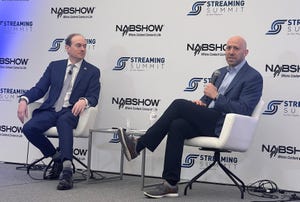Bits and bites and StrataLight

5:40 Pm -- Additional notes on the Comcast/Cisco 100-Gbit/s Ethernet test announced yesterday:
It's no surprise that StrataLight Communications was involved. StrataLight was a spotlight player when the Cisco Systems Inc. (Nasdaq: CSCO) CRS-1 core router first rolled out in 2004, providing the technology for the core router's 40-Gbit/s debut. (See StrataLight Powers Cisco's OC768.) This time, its 100-Gbit/s DWDM transponder chassis sat between the CRS-1 and the Comcast Corp. (Nasdaq: CMCSA, CMCSK) network.
StrataLight didn't get mentioned in the press release, but everyone involved freely admits it was in the test.Now, one reason Comcast liked the CRS-1 in the first place was the IP over DWDM concept, where Cisco plugs a DWDM interface directly into the router. That removes the need for a separate transponder like StrataLight's. (See Cisco's CRS-1 Goes Optical.)
(This doesn't mean StrataLight gets shut out; the company provides IP-over-DWDM interfaces to Cisco.)
It's being done at 10- and 40-Gbit/s. Why not 100-Gbit/s? Cisco isn't saying definitively that it's going to happen, but Kelly Ahuja, Cisco's VP in charge of core routers, acknowledges that it's likely.Doesn't the CRS-1 only have 40-Gbit/s capacity per slot? It seems one of two things happened: Either the interface for this test used two slots, or Cisco's got an upgrade in its pocket. Cisco's response, via a spokesman: "It is not yet a commercial product so the number of slots or space has yet to be determined."
In a sense, it's moot. This was just a test, so the technology used isn't necessarily what will go commercial in 2010 or beyond. Cisco could have used a room-sized supercomputer if it wanted to.Reiterating from the message board: It appears the CRS-1 did not output one 100-Gbit/s stream. Rather, it used multiple lane distribution (MLD) -- part of the Institute of Electrical and Electronics Engineers Inc. (IEEE) 802.3ba standard for 40- and 100-Gbit/s Ethernet -- to split the stream into ten lanes of 10-Gbit/s apiece. StrataLight then fused them into a 100-Gbit/s flow on one wavelength, transmitted using a modulation scheme the company won't specify. (Feel free to speculate.)
Finally, StrataLight confirms something Light Reading has long suspected: The phrase "100-Gig" has irrational sex appeal. Witness the release of -- let's face it -- a dull mux/demux chip earlier this week. "I got more coverage on that than when we shipped 2,500 transponders," says Dave Sykes, StrataLight's VP of marketing.
— Craig Matsumoto, West Coast Editor, Light Reading
About the Author(s)
You May Also Like











